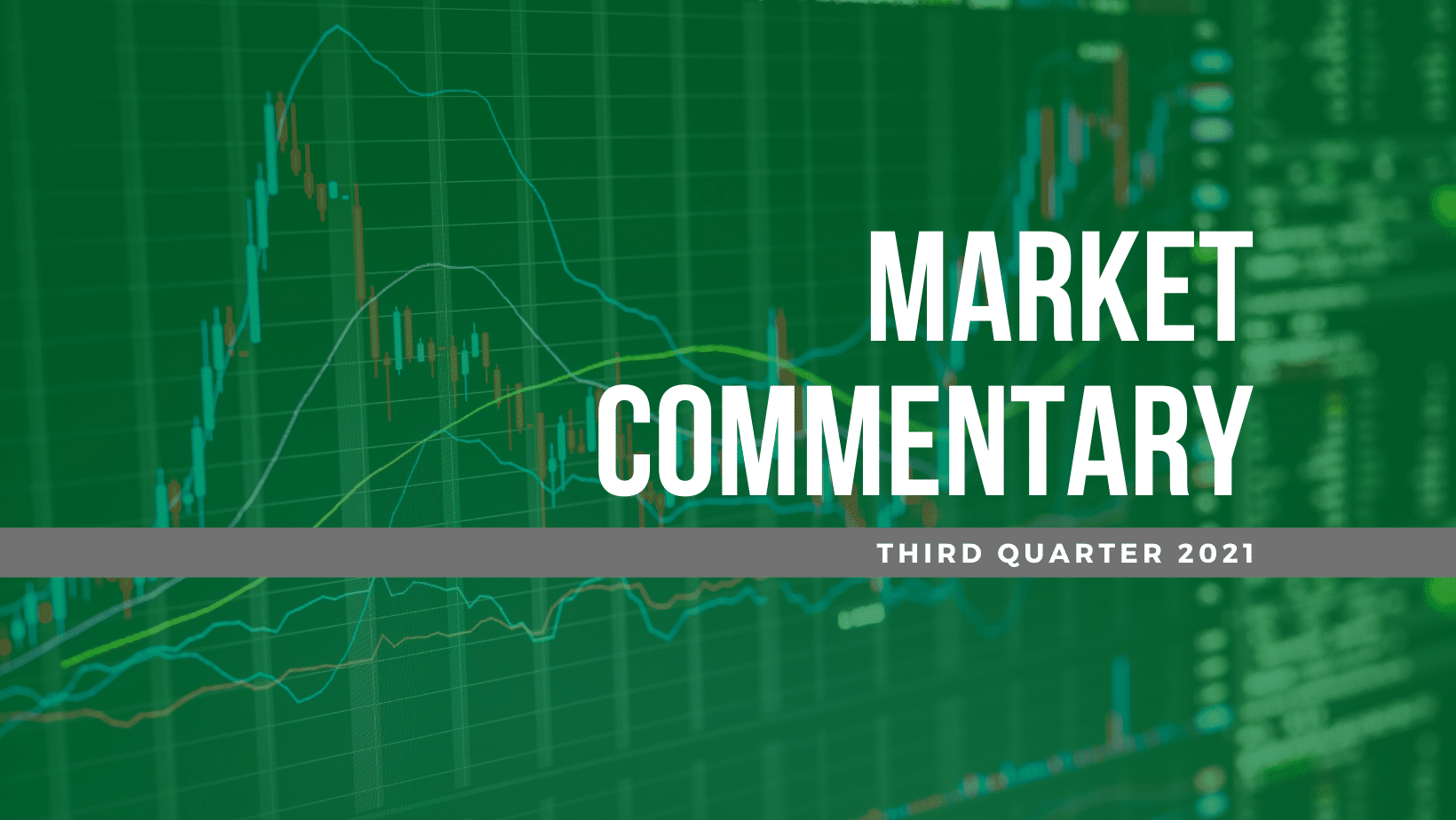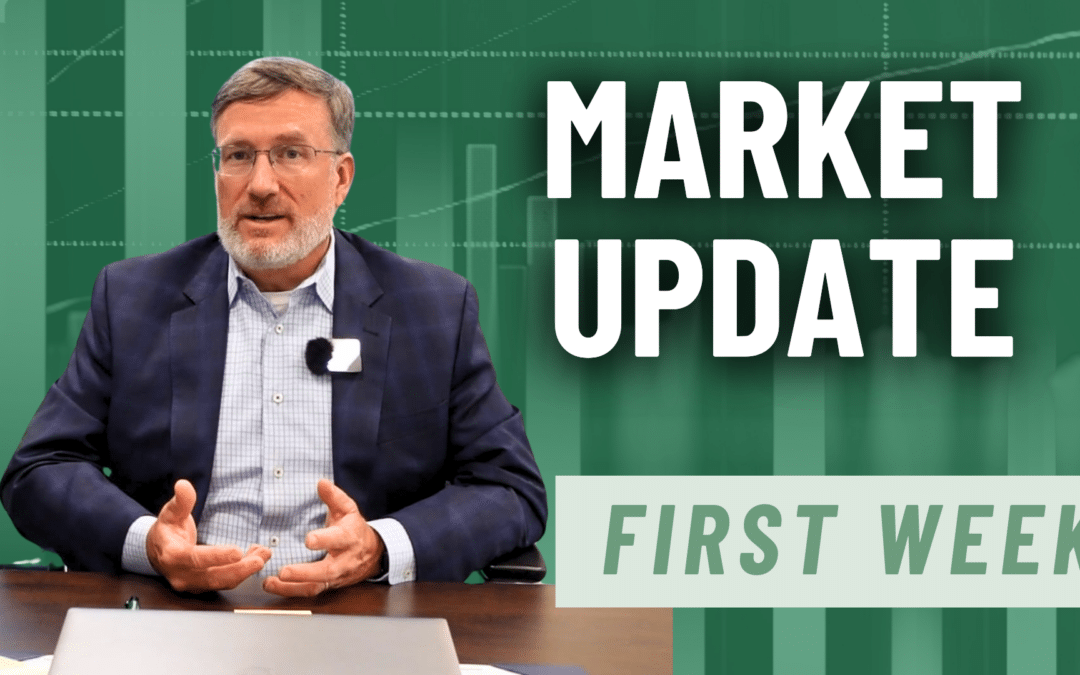Economic Outlook
By Dr. John McAlhany
Milton Friedman (deceased) a renowned economist that served on the faculty of the University of Chicago wrote in his classic book The Monetary History of the United States that “Inflation is always and everywhere a monetary phenomenon.” In other words, inflation is simply “too much money chasing too few goods.” Furthermore, referring to the effects of monetary policy on the economy, he said that “monetary actions affect the economic conditions only after a lag that is both long and variable.” His conclusions go a long way in explaining the current status of our economy – robust growth with unacceptable inflation.
Economic growth as measured by GDP was booming during the fourth quarter. When reported later in January, Real GDP – adjusted for inflation – is forecasted to have increased by around 6% and Nominal GDP around 13%. Behind this growth is the massive government stimulus injected into the economy over the course of the pandemic and the extremely accommodative policies – low interest rates and quantitative easing – maintained by the Federal Reserve System. Consumer spending (which makes up about 70% of GDP) accounts for much of this growth.
Consumer net worth increased to $150 trillion in the fourth quarter and by 15% over the past year. Higher home prices (+18 % over past year) and increases in wages and stock prices are building consumers’ wealth and their desire to spend. Despite the effects of the Omicron variant, holiday sales increased by 8.5% over last year’s holiday season and retail sales are 22% higher than pre-pandemic levels. Sales of goods and services may be affected by the virus in the first quarter of 2022, but the outlook for the economy is still positive.
A strong economy is a good thing but as Professor Friedman stated, and which applies to the circumstances today, we have “too much money chasing too few goods” resulting in an unacceptably high level of inflation. As measured by the consumer price index (CPI) prices rose by 6.8% on a year-over-year basis, the fastest pace in 39 years. The price index preferred by the Federal Reserve (Fed), Core PCE, was not quite as high at 4.7%, but well above the Fed’s goal of a 2% sustained inflation rate (and likely to remain above this level). In his growing concern about inflation, newly reappointed Fed Chairman Jerome Powell said that we cannot be sure that price increases will slow in the second half of next year. Powell has frequently expressed his belief that as the pandemic eases, supply and demand imbalances would fade, and prices would decline. However, now he is saying such an outcome is only “likely.” With his uncertainty building, at a Senate Banking Committee meeting Powell said, “the economy is very strong” and “it is appropriate in my view to consider wrapping up the taper of our asset purchases, perhaps a few months sooner.” Then later at their meeting in December, the Fed did change monetary policy. They increased the rate of tapering of their bond purchases, and indicated more concern about inflation. As a result, the market is anticipating as many as three increases in the Federal Funds Rate during 2022.
These rate increases will result in higher interest rates on mortgages, credit cards, auto loans, etc. which should affect consumer and business spending and slow economic growth. Slower growth coupled with the waning of supply chain disruptions should take some pressure off inflation. However, in our tight labor market where businesses compete for workers and try to entice people to reenter the labor force, wage rates are rising. In turn, businesses pass along the higher wage costs to consumers as higher prices, creating more upward inflationary pressure as the consumer/worker will then demand higher wages. With over 11 million job openings according to the JOLTS report and far fewer unemployed, this dynamic is not going away anytime soon. The Fed hopes that by reducing monetary stimulus they can orchestrate an orderly slowdown in the economy and reduce inflationary pressures. It will take time for the inflation rate to recede. It may even require additional monetary policy changes by the Fed, especially if the government injects additional stimulus dollars into the economy (although this seems less likely with more gridlock in Washington).
Looking forward, even with the Omicron variant, the economy should remain strong in 2022. The pace of the virus will create some uncertainty, but the economic fundamentals are such that only a major shutdown of businesses and industries would cause a dramatic slowdown in economic growth. Consumers are confident with increased savings and a higher net worth. The labor market is strong, and the supply chain disruptions should wane. And just as Professor Freidman indicated, monetary policy changes by the Fed will not have a major effect on the economy until much later (although it could impact financial markets sooner). We remain positive even though there are some risks due to the Omicron variant and the change in stimulus from the Fed and the US Government. Stay healthy.
The Stock Market
By Walter Todd
Charles Dickens opens his novel, A Tale of Two Cities, with the lines “It was the best of times, it was the worst of times, it was the age of wisdom, it was the age of foolishness. “I think that pretty much summarizes last quarter and the year 2021 in the global equity markets. We started out the year in the age of foolishness with the meme-stock craze in January and February, but ended the year by perhaps moving toward some measure of wisdom with valuation metrics coming back into vogue, at least moderately, and non-profitable companies getting hit hard. Similar to our discussion in these pages last quarter, it was the best of times for US large-cap stocks (the S&P 500 large-cap index posted 70 record closes in 2021). For small-cap and International equities, perhaps it was not the worst of times (well maybe for emerging markets), but far from great. As you can see from the table at the end of this commentary, most of these areas ended higher for the quarter and the year, but considerably lagged the US large-cap S&P 500. Will this dynamic change in 2022? We think it could. At the very least, we continue to see more reasonable valuations and opportunities down the cap scale. However, before we look too far down the road ahead, let’s examine what happened in the past three months.
The September swoon that ended the third quarter of 2021 gave way to a roaring October and early November (at least for the S&P 500). Concerns around Omicron, inflation and the Fed resulted in a few dips of 4%-5% later in the quarter, but the market recovered to close the last two weeks near a record high (again at least for the S&P 500). For the quarter, the S&P 500 Index closed up sharply at 11.0%, including dividends and 28.7% higher for the year. Small-cap stocks (as measured by the S&P 600) again underperformed their larger peers but still ended the quarter higher by 5.6% and positive 26.7% on the year. I would note this was significantly different from another small cap index, the Russell 2000, which was just 14.8% higher for 2021. International stocks lagged (again) for the three-month period with Developed International Markets rising only 2.7% for the quarter (as measured by the EAFE Index). Emerging Markets (EM) fared worse, falling -1.4% for the quarter (using the MSCI Emerging Market Index). For the year, Developed Markets ended up 11.9% and Emerging Markets were down -2.5%. Putting the US and International Markets together, the MSCI All-Country World Index (ACWI) posted a solid quarter trading up by 6.8% and ended 19.0% higher for the year-to-date period.
The sector performance started the first month of the quarter with a pro-cyclical tilt as Consumer Discretionary, Energy, Tech and Materials were the top 4 sectors. However, the last two months were much more defensive, as Real Estate, Consumer Staples, Tech and Utilities led the way. For the entire three-month period, it was a mixed bag. While, 7 out of 11 sectors outperformed the broader market (as measured by S&P 500), Real Estate, Technology, Materials, Staples, Utilities and Discretionary were the top performers, each up over 12% for the period. At the bottom were Industrials, Energy, Financials and Communication Services with the first three rising between 4% and 9%, while Comm. Services was the only negative sector (barely) down less than 0.1%. For the full year, all eleven sectors were positive, but just four outperformed the broader market. Despite a tough finish, Energy remained at the top, up over 54%. Real Estate, Financials and Technology were also up nicely between 34% and 46%. Consumer Staples and Utilities occupied the bottom two spots YTD, rising approximately 19% and 18%, respectively.
While the headline S&P 500 had a terrific quarter, underneath the surface of the largest 5 or 10 names, the market is churning. In fact, the market-cap weighted S&P outperformed the equal-weighted S&P by nearly 300 basis points (3 percentage points) in the second half of 2021, with just five stocks (MSFT, AAPL, NVDA, GOOG/L, TSLA) accounting for 46% of the gains in the index over that time period. What changes this trading pattern in the coming year could be continued economic growth and a full reopening of the US and global economies. That would give investors more confidence to look beyond the “Big 5”, to other corners of the market. Of course, beyond this opportunity, there continue to be numerous risks to monitor. Outside the obvious virus evolution, we are watching to see the impact of a reduced liquidity backdrop due to less accommodative Fed policy and far less fiscal support from the US government. As I write this summary, we are off to a good start on the first day of trading in 2022, but we expect more volatility along the way this year than we experienced in 2021.
The Bond Market
By John Wiseman
Better than expected economic data, especially higher and more persistent inflation readings, prompted the Federal Reserve to announce a reduction in the amount of monthly asset purchases for their balance sheet. Under the expected timing, the purchases would end in March although reinvestment of maturing bonds continues to keep the balance sheet at a significant level. The bond markets fear the Federal Reserve is being forced to act to fight inflation just as the economy cools post the government-subsidized pandemic period growth. The result is a yield curve that has flattened significantly. That is, the yield on the 2-Year Treasury note, which is highly influenced by the Federal Reserve, increased by a significant 45 basis points (0.45%) this quarter to 0.73% while the yield on the 10-Year Treasury Note only moved up 2 basis point (0.02%) to 1.51%. This resulted in diverging total returns of -0.51% and 0.75%, respectively, due to the higher income component of the longer bond. The total return of the 10-Year was still lower by -3.68% for the full year. We remain cautious on government bonds due to more persistent, but slowing, inflation; yet, until we see more sustained growth overseas, depressed global rates will continue to anchor bond yields in the US. Additionally, any setbacks with equity markets continue to be met with hedge-buying of US bonds, further anchoring yields at lower than expected levels.
Corporate bond spreads widened modestly in reaction to Covid concerns, but remain below pre-pandemic levels. The total return of ICE BofA 1-10 Year Corporate Index was -0.57% and -0.85% for the quarter and year, respectively. There was similar performance among bonds of various credit ratings, except for those with the lowest rating. These “junk” bonds continue to outperform as investors seek higher yields and are comforted by the improving economy and government support. Corporations have used the favorable environment of low yields and narrow credit spreads to issue record amounts of debt. 2021 saw over $1.41 trillion in new debt issued – second only to the record of $1.75 trillion in 2020. Similar to Treasuries, longer-dated bonds outperformed shorter ones. We continue to be overweight the sector, but remain focused on companies with strong balance sheets given the narrowness of credit spreads.
Municipal rates remain low, but continue to be a popular place for fixed income investors to position assets with the near certainty of higher tax rates. The Bloomberg 5-Year Municipal Index had a total return of 0.04% for the quarter and 0.34% for the year. The ratio of Municipal yields to Treasury yields finished the year at 70%. This measure of relative value remains slightly below long-term averages due to ample demand and waning supply. Local municipalities continue to maintain relatively strong financial positions from federal programs. We continue to favor this sector for those in the higher tax brackets.
Market Indicators
Source: Bloomberg
| QTD 2021 Total Return1 | YTD 2021 Total Return2 | 52 Week Total Return3 | |
| S&P 500 | 11.02% | 28.68% | 28.68% |
| DJIA | 7.87% | 20.95% | 20.95% |
| NASDAQ | 8.47% | 22.21% | 22.21% |
| S&P 400 | 7.97% | 24.73% | 24.73% |
| S&P 600 | 5.59% | 26.74% | 26.74% |
| MSCI EAFE | 2.74% | 11.86% | 11.86% |
| MSCI Emerging Markets | -1.36% | -2.47% | -2.47% |
| MSCI ACWI | 6.75% | 19.02% | 19.02% |
| Barclays Int. Gov’t/Credit | -0.57% | -1.44% | -0.44% |
| Barclays Aggregate Bond | 0.01% | -1.54% | -1.54% |
| Barclays 5-Year Municipal | 0.04% | 0.34% | 0.34% |










